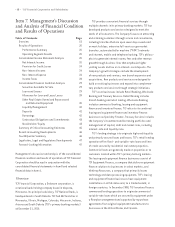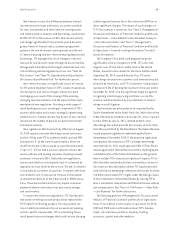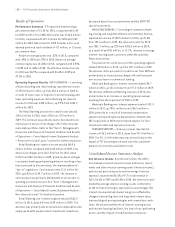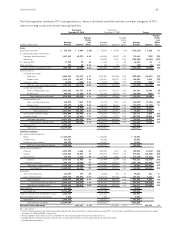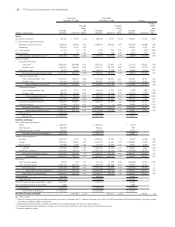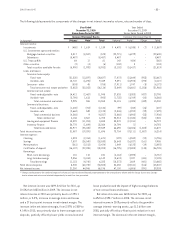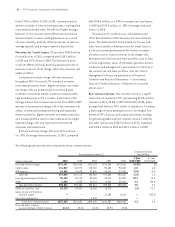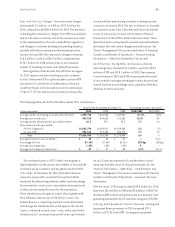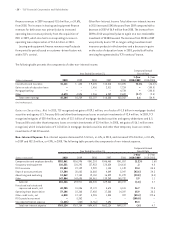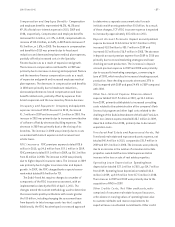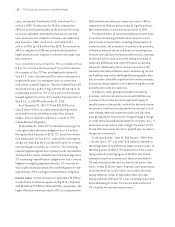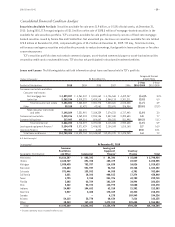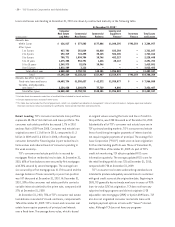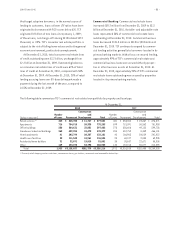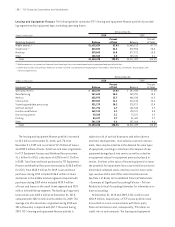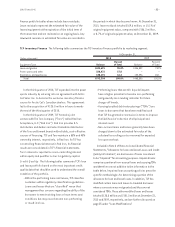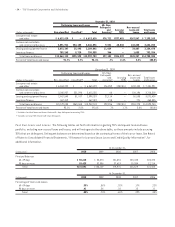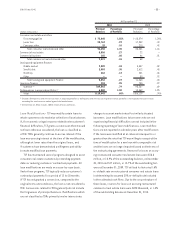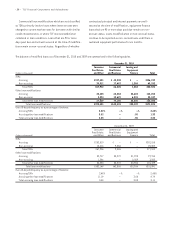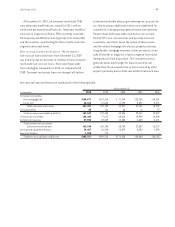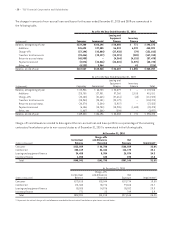TCF Bank 2010 Annual Report Download - page 44
Download and view the complete annual report
Please find page 44 of the 2010 TCF Bank annual report below. You can navigate through the pages in the report by either clicking on the pages listed below, or by using the keyword search tool below to find specific information within the annual report.• 28 • TCF Financial Corporation and Subsidiaries
costs, net totaled $6 million for 2010, down from $12.1
million in 2009. The decrease for 2010 as compared to
2009 was primarily attributable to the reversal of reserves
on several unfunded commitments that were closed and
lower premium costs related to consumer real estate loan
pool insurance. Other credit costs, net totaled $12.1
million in 2009, up $8.8 million from 2008. The increase for
2009 as compared to 2008 was primarily attributable to
higher premium costs related to consumer real estate loan
pool insurance.
Visa Indemnification Expense TCF is a member of Visa
U.S.A. for issuance and processing of its card transactions.
As a member of Visa, TCF has an obligation to indemnify
Visa U.S.A. under its bylaws and Visa under a retrospective
responsibility plan, for contingent losses in connection
with certain covered litigation (“the Visa indemnification”)
disclosed in Visa’s public filings with the SEC based on its
membership proportion. TCF is not a party to the lawsuits
brought against Visa U.S.A. TCF’s membership proportion in
Visa U.S.A. is .16234% at December 31, 2010.
As of December 31, 2010, TCF held 308,219 Visa Inc.
Class B shares with no recorded value that are generally
restricted from sale, other than to other Class B share-
holders, and are subject to dilution as a result of TCF’s
indemnification obligation.
At December 31, 2010, TCF’s estimated remaining Visa
contingent indemnification obligation was $1.4 million.
During the fourth quarter of 2010, TCF, based on informa-
tion made public by Visa U.S.A., reduced the contingency
obligation related to the Visa indemnification for certain
covered litigation matters by $1 million. The remaining
covered litigation against Visa is primarily with card retailers
and merchants, mostly related to fees and interchange rates.
TCF’s remaining indemnification obligation for Visa’s covered
litigation is a highly judgmental estimate. TCF must rely on
Visa’s public disclosures about the covered litigation in mak-
ing estimates of this contingent indemnification obligation.
Income Taxes Income tax expense represented 36.93% of
income before income tax expense during 2010, compared
with 34.60% and 37.30% in 2009 and 2008, respectively. The
higher effective income tax rate for 2010 as compared with
2009 and the lower effective income tax rate for 2009 as
compared with 2008 are primarily due to significant favor-
able developments in uncertain tax positions in 2009.
The determination of current and deferred income taxes
is a critical accounting estimate which is based on com-
plex analyses of many factors including interpretation of
income tax laws, the evaluation of uncertain tax positions,
differences between the tax and financial reporting bases
of assets and liabilities (temporary differences), estimates
of amounts due or owed such as the timing of reversal of
temporary differences and current financial accounting
standards. Additionally, there can be no assurance that
estimates and interpretations used in determining income
tax liabilities may not be challenged by taxing authorities.
Actual results could differ significantly from the estimates
and tax law interpretations used in determining the current
and deferred income tax liabilities.
In addition, under generally accepted accounting
principles, deferred income tax assets and liabilities are
recorded at the income tax rates expected to apply to
taxable income in the periods in which the deferred income
tax assets or liabilities are expected to be realized. If such
rates change, deferred income tax assets and liabilities
must be adjusted in the period of change through a charge
or credit to the Consolidated Statements of Income. Also, if
current period income tax rates change, the impact on the
annual effective income tax rate is applied year-to-date in
the period of enactment.
As discussed under “Item 1A. Risk Factors — Other Risks
— Income Taxes”, TCF uses a REIT and related companies in
the management of qualified real estate secured assets. In
the third quarter of 2009, TCF received notice from a state
taxing authority challenging use of the REIT and related
companies based on a recent court decision unrelated to
TCF and unrelated to the laws in place for the years in the
notice. In May 2010, the state’s Supreme Court unanimously
overturned the lower court’s decision on which the state
taxing authority relied. In September 2010, the state
taxing authority informed TCF it was conceding its position
and withdrawing its notice. This closure had no effect on
TCF’s liability for uncertain tax positions.


